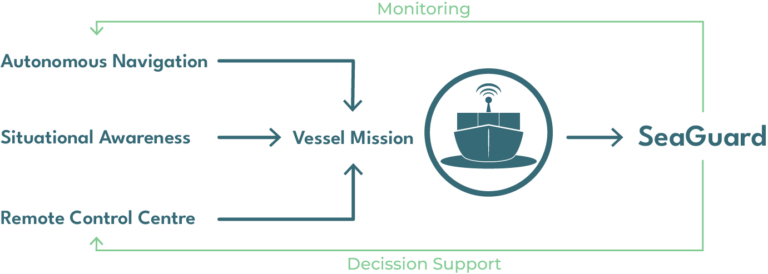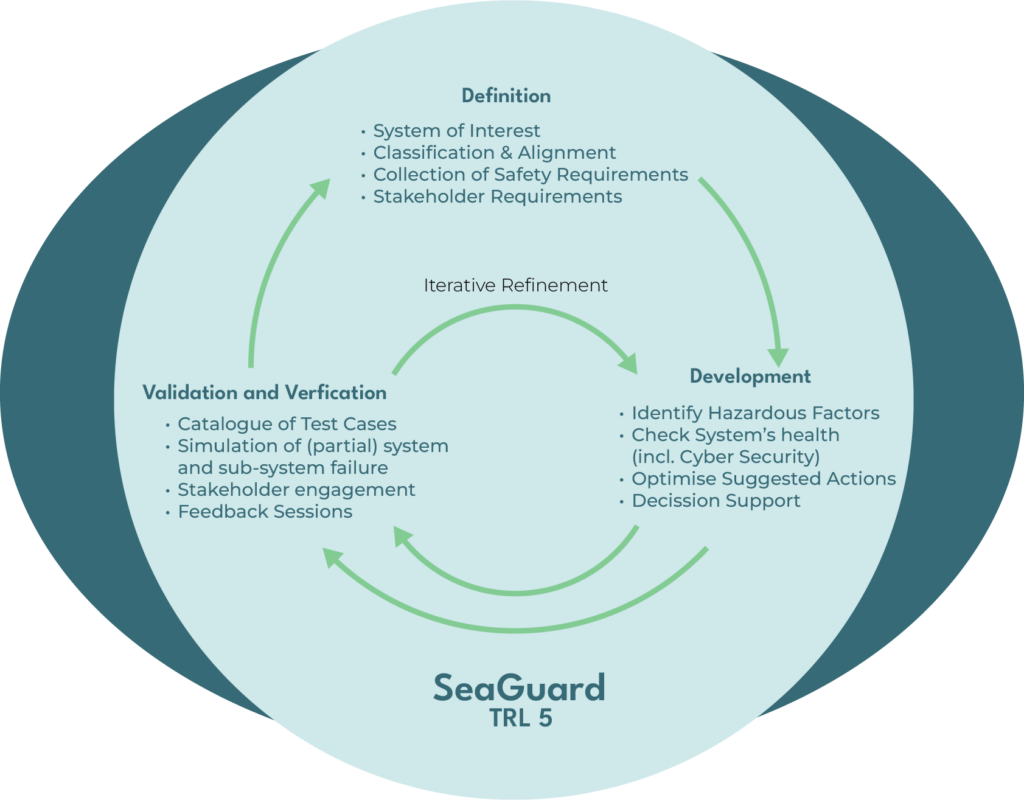
Vessels with high degrees of automation that operate in challenging environments, such as inland waterways, constitute complex Socio-Technical Systems. Especially autonomous vessels integrate hardware, advanced digital systems and software systems, as well as humans-in-the-loop. One of the main barriers to large scale adoption is managing the uncertainties related to their operational safety level and their resiliency toward failure, unsafe system interactions, or cyber-security. The SeaGuard tool will address these issues to ensure safety, security and resilience of the individual vessel and an automated fleet.
SeaGuard is a software tool developed as part of the AUTOFLEX project by the National Technical University of Athens (NTUA). Its design aims to enable safe navigation and mitigate potential risks related to autonomous shipping operations. Particularly in confined environments such as inland waterways. It further aims to provide decision support to operators and relevant stakeholders in terms of ensuring safe and resilient operation through the implementation of appropriate risk control measures.
This is achieved by enabling real-time monitoring and analysis of the safety and cyber-security state of individual vessels within a fleet of automated vessels. The SeaGuard tool will facilitate reverting to a safe state within a specified time window in case of system malfunctions, such as partial failures and subsystem breakdowns. Prominent features of the tool will be that it takes into account security and performance aspects for automated ship operations while it also incorporates cybersecurity barriers to safeguard against malicious acts from the outside.
The methodology for the development of the SeaGuard tool, including the methods and safety-related metrics that can be implemented in the envisioned monitoring system, consists of the three iterative stages:
- classification, alignment, and collection of safety and performance requirements from relevant stakeholders,
- the development phase, which includes the identification of hazardous factors for the individual vessels and the fleet, the identification of ways to monitor the system’s health, including cybersecurity issues, and a method to optimise suggested actions in order to provide decision support,
- the validation and verification of the tool through simulations to achieve the targeted TRL5, and the development of a test catalogue based on the requirements determined in Stage (1).
